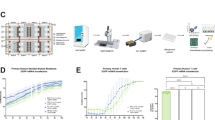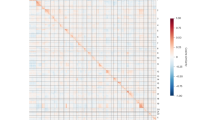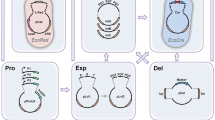Abstract
We previously described a protocol for genome engineering of mammalian cultured cells with clustered regularly interspaced short palindromic repeats and associated protein 9 (CRISPR–Cas9) to generate homozygous knock-ins of fluorescent tags into endogenous genes. Here we are updating this former protocol to reflect major improvements in the workflow regarding efficiency and throughput. In brief, we have improved our method by combining high-efficiency electroporation of optimized CRISPR–Cas9 reagents, screening of single cell-derived clones by automated bright-field and fluorescence imaging, rapidly assessing the number of tagged alleles and potential off-targets using digital polymerase chain reaction (PCR) and automated data analysis. Compared with the original protocol, our current procedure (1) substantially increases the efficiency of tag integration, (2) automates the identification of clones derived from single cells with correct subcellular localization of the tagged protein and (3) provides a quantitative and high throughput assay to measure the number of on- and off-target integrations with digital PCR. The increased efficiency of the new procedure reduces the number of clones that need to be analyzed in-depth by more than tenfold and yields to more than 26% of homozygous clones in polyploid cancer cell lines in a single genome engineering round. Overall, we were able to dramatically reduce the hands-on time from 30 d to 10 d during the overall ~10 week procedure, allowing a single person to process up to five genes in parallel, assuming that validated reagents—for example, PCR primers, digital PCR assays and western blot antibodies—are available.
Key points
-
This update to the authors’ previous protocol for genome engineering of mammalian cultured cells with CRISPR–Cas9 to generate homozygous knock-ins of fluorescent tags into endogenous genes improves the method using electroporation, automated imaging and digital PCR screening.
-
The updated protocol provides both increased efficiency and throughput.
This is a preview of subscription content, access via your institution
Access options
Access Nature and 54 other Nature Portfolio journals
Get Nature+, our best-value online-access subscription
$32.99 / 30 days
cancel any time
Subscribe to this journal
Receive 12 print issues and online access
$259.00 per year
only $21.58 per issue
Buy this article
- Purchase on SpringerLink
- Instant access to full article PDF
Prices may be subject to local taxes which are calculated during checkout





Similar content being viewed by others
Data availability
Raw datasets generated and analyzed during this work are available at https://figshare.com/s/2a35a6156c9a8cf60a86 (https://doi.org/10.6084/m9.figshare.24198609). Any additional data required for research purposes are available from the corresponding authors upon request. Source data are provided with this paper.
Code availability
Computational scripts used for the analysis of dPCR results are available at github (https://github.com/beatrizserrano/CRISPR_updated_protocol/tree/master; refer to https://github.com/beatrizserrano/CRISPR_updated_protocol/blob/master/1_analysisReplicates.Rmd to analyze replicates samples measured with the STILLA device or to https://github.com/beatrizserrano/CRISPR_updated_protocol/blob/master/2_analysis_plates.Rmd to analyze data acquired with the BioRad platform.
References
Cai, Y. et al. Experimental and computational framework for a dynamic protein atlas of human cell division. Nature 561, 411–415 (2018).
Walther, N. et al. A quantitative map of human Condensins provides new insights into mitotic chromosome architecture. J. Cell Biol. 217, 2309–2328 (2018).
Wutz, G. et al. Topologically associating domains and chromatin loops depend on cohesin and are regulated by CTCF, WAPL, and PDS5 proteins. EMBO J. 36, 3573–3599 (2017).
Cattoglio, C. et al. Determining cellular CTCF and cohesin abundances to constrain 3D genome models. eLife 8, e40164 (2019).
Koch, B. et al. Generation and validation of homozygous fluorescent knock-in cells using CRISPR–Cas9 genome editing. Nat. Protoc. 13, 1465–1487 (2018).
Otsuka, S. et al. A quantitative map of nuclear pore assembly reveals two distinct mechanisms. Nature 613, 575–581 (2023).
Aksenova, V., Arnaoutov, A. & Dasso, M. Analysis of nucleoporin function using inducible degron techniques. Meth. Mol. Biol. https://doi.org/10.1007/978-1-0716-2337-4_9 (2022).
Yang, Y. et al. A dual AAV system enables the Cas9-mediated correction of a metabolic liver disease in newborn mice. Nat. Biotechnol. 34, 334–338 (2016).
Gao, X. et al. Treatment of autosomal dominant hearing loss by in vivo delivery of genome editing agents. Nature 553, 217–221 (2018).
Santiago-Fernández, O. et al. Development of a CRISPR/Cas9-based therapy for Hutchinson–Gilford progeria syndrome. Nat. Med. 25, 423–426 (2019).
Chen, S. et al. CRISPR-READI: efficient generation of knockin mice by CRISPR RNP electroporation and AAV donor infection. Cell Rep. 27, 3780–3789.e4 (2019).
Kunzelmann, S., Böttcher, R., Schmidts, I. & Förstemann, K. A comprehensive toolbox for genome editing in cultured Drosophila melanogaster cells. G3 6, 1777–1785 (2016).
Paix, A. et al. Scalable and versatile genome editing using linear DNAs with microhomology to Cas9 sites in Caenorhabditis elegans. Genetics 198, 1347–1356 (2014).
Schwartz, M. L. & Jorgensen, E. M. SapTrap, a toolkit for high-throughput CRISPR/Cas9 gene modification in Caenorhabditis elegans. Genetics 202, 1277–1288 (2016).
Okamoto, S., Amaishi, Y., Maki, I., Enoki, T. & Mineno, J. Highly efficient genome editing for single-base substitutions using optimized ssODNs with Cas9-RNPs. Sci. Rep. 9, 4811 (2019).
Liang, X., Potter, J., Kumar, S., Ravinder, N. & Chesnut, J. D. Enhanced CRISPR/Cas9-mediated precise genome editing by improved design and delivery of gRNA, Cas9 nuclease, and donor DNA. J. Biotechnol. 241, 136–146 (2017).
Roth, T. L. et al. Reprogramming human T cell function and specificity with non-viral genome targeting. Nature 559, 405–409 (2018).
Kim, S., Kim, D., Cho, S. W., Kim, J. & Kim, J. S. Highly efficient RNA-guided genome editing in human cells via delivery of purified Cas9 ribonucleoproteins. Genome Res. 24, 1012–1019 (2014).
Naeem, M., Majeed, S., Hoque, M. Z. & Ahmad, I. Latest developed strategies to minimize the off-target effects in CRISPR–Cas-mediated genome editing. Cells 9, 1608 (2020).
Hanlon, K. S. et al. High levels of AAV vector integration into CRISPR-induced DNA breaks. Nat. Commun. 10, 4439 (2019).
Schiel, J. A., Gross, M., Chou, E. T. & Kelley, M. Fluorescent tagging of an endogenous gene by homology-directed repair using Dharmacon TM Edit-R TM CRISPR-Cas 9 reagents. https://api.semanticscholar.org/CorpusID:22921699 (Dharmacon Life Sciences, 2016).
Paix, A., Rasoloson, D., Folkmann, A. & Seydoux, G. Rapid tagging of human proteins with fluorescent reporters by genome engineering using double-stranded DNA donors. Curr. Protoc. Mol. Biol. 129, e102 (2019).
Taylor, S. C., Laperriere, G. & Germain, H. Droplet digital PCR versus qPCR for gene expression analysis with low abundant targets: from variable nonsense to publication quality data. Sci. Rep. 7, 2409 (2017).
Witte, A. K. et al. A systematic investigation of parameters influencing droplet rain in the Listeria monocytogenes prfA assay-reduction of ambiguous results in ddPCR. PLoS ONE 11, e0168179 (2016).
Krumbholz, M. et al. Large amplicon droplet digital PCR for DNA-based monitoring of pediatric chronic myeloid leukaemia. J. Cell Mol. Med. 23, 4955–4961 (2019).
Madic, J. et al. Three-color crystal digital PCR. Biomol. Detect Quantif. 10, 34–46 (2016).
Engler, C., Kandzia, R. & Marillonnet, S. A one pot, one step, precision cloning method with high throughput capability. PLoS ONE 3, e3647 (2008).
Doudna, J. A. & Sontheimer, E. J. Methods in enzymology. The use of CRISPR/Cas9, ZFNs, and TALENs in generating site-specific genome alterations. Preface. Methods Enzymol. 546, 19–20 (2014).
Liang, X. et al. Rapid and highly efficient mammalian cell engineering via Cas9 protein transfection. J. Biotechnol. 208, 44–53 (2015).
Hendel, A. et al. Chemically modified guide RNAs enhance CRISPR–Cas genome editing in human primary cells. Nat. Biotechnol. 33, 985–989 (2015).
Monia, B. P., Johnston, J. F., Sasmor, H. & Cummins, L. L. Nuclease resistance and antisense activity of modified oligonucleotides targeted to Ha-ras. J. Biol. Chem. 271, 14533–14540 (1996).
Zhang, J. P. et al. Efficient precise knockin with a double cut HDR donor after CRISPR/Cas9-mediated double-stranded DNA cleavage. Genome Biol. https://doi.org/10.1186/s13059-017-1164-8 (2017).
Li, H. et al. Design and specificity of long ssDNA donors for CRISPR-based knock-in. bioRxiv https://doi.org/10.1101/178905 (2019).
SantaLucia, J. A unified view of polymer, dumbbell, and oligonucleotide DNA nearest-neighbor thermodynamics. Proc. Natl Acad. Sci. USA 95, 1460–1465 (1998).
Quan, P. L., Sauzade, M. & Brouzes, E. DPCR: a technology review. Sensors 18, 1271 (2018).
Roederer, M. Distributions of autofluorescence after compensation: be panglossian, fret not. Cytom. Part A 89, 398–402 (2016).
Patterson, G., Day, R. N. & Piston, D. Fluorescent protein spectra. J. Cell Sci. 114, 837–838 (2001).
Banaz, N., Mäkelä, J. & Uphoff, S. Choosing the right label for single-molecule tracking in live bacteria: side-by-side comparison of photoactivatable fluorescent protein and Halo tag dyes. J. Phys. D. 52, 064002 (2019).
Hirano, M. et al. A highly photostable and bright green fluorescent protein. Nat. Biotechnol. 40, 1132–1142 (2022).
Kleeman, B. et al. A guide to choosing fluorescent protein combinations for flow cytometric analysis based on spectral overlap. Cytom. Part A 93, 556–562 (2018).
Leonetti M. D., Sekine S., Kamiyama D., Weissman J. S. & Huang B. A scalable strategy for high-throughput GFP tagging of endogenous human proteins. Proc. Natl Acad. Sci. USA https://doi.org/10.1073/pnas.1606731113 (2016).
Teng, K. W. et al. Labeling proteins inside living cells using external fluorophores for microscopy. eLife 5, e20378 (2016).
Schraivogel, D. et al. High-speed fluorescence image-enabled cell sorting. Science 375, 315–320 (2022).
Acknowledgements
We thank N. Daigle for valuable discussions during the entire project and for her great support during the writing of this manuscript. We thank K. Sandvold Beckwith for his important contribution in manuscript revisions. Additionally, we thank our EMBL facilities; the Flow Cytometry Facility, the Advanced Light Microscopy Facility, the Centre for Bioimage Analysis Facility and the Genomics Facility. Furthermore, we highly appreciate the demonstration systems and application specialists from STILLA technologies and Bio-Rad Laboratories.
Author information
Authors and Affiliations
Contributions
M.K. and A.C. planned and executed the experiments. B.S.S. generated the analysis software and performed data analysis. M.K., A.C., B.S.S. and J.E. wrote the manuscript. A.C. and N.R.M. revised the manuscript.
Corresponding author
Ethics declarations
Competing interests
The authors declare no competing interests.
Peer review
Peer review information
Nature Protocols thanks the anonymous reviewer(s) for their contribution to the peer review of this work.
Additional information
Related links
Key references using this protocol
Otsuka, S. et al. Nature 613, 575–581 (2023): https://doi.org/10.1038/s41586-022-05528-w
Koch, B. et al. Nat. Protcoc. 13, 1465–1487 (2018): https://doi.org/10.1038/nprot.2018.042
This protocol is an update to Nat. Protoc. 13, 1465–1487 (2018): https://doi.org/10.1038/nprot.2018.042
Supplementary information
Supplementary Information
Methods, Supplementary Tables 1–10 and Figs. 1–3.
Supplementary Code 1
To be run with dPCR datasets, from BioRad platform.
Supplementary Code 2
To be run with dPCR datasets, from Stilla platform.
Supplementary Code 3
To be run in conjunction with codes 1 and 2.
Source data
Source Data Fig. 3
Fluorescence images in SP8 microscope of representative validated clones.
Source Data Fig. 3
Results from dPCR analysis of CRISPR-edited clones (c and e).
Source Data Fig. 4
Results from dPCR analysis of CRISPR-edited clones (d).
Source Data Fig. 5
Results from dPCR analysis of CRISPR-edited clones (c).
Source Data Box 1
Statistical analysis implemented on the dPCR results for edited clones obtained with the PCRNP method.
Rights and permissions
Springer Nature or its licensor (e.g. a society or other partner) holds exclusive rights to this article under a publishing agreement with the author(s) or other rightsholder(s); author self-archiving of the accepted manuscript version of this article is solely governed by the terms of such publishing agreement and applicable law.
About this article
Cite this article
Callegari, A., Kueblbeck, M., Morero, N.R. et al. Rapid generation of homozygous fluorescent knock-in human cells using CRISPR–Cas9 genome editing and validation by automated imaging and digital PCR screening. Nat Protoc 20, 26–66 (2025). https://doi.org/10.1038/s41596-024-01043-6
Received:
Accepted:
Published:
Issue date:
DOI: https://doi.org/10.1038/s41596-024-01043-6



